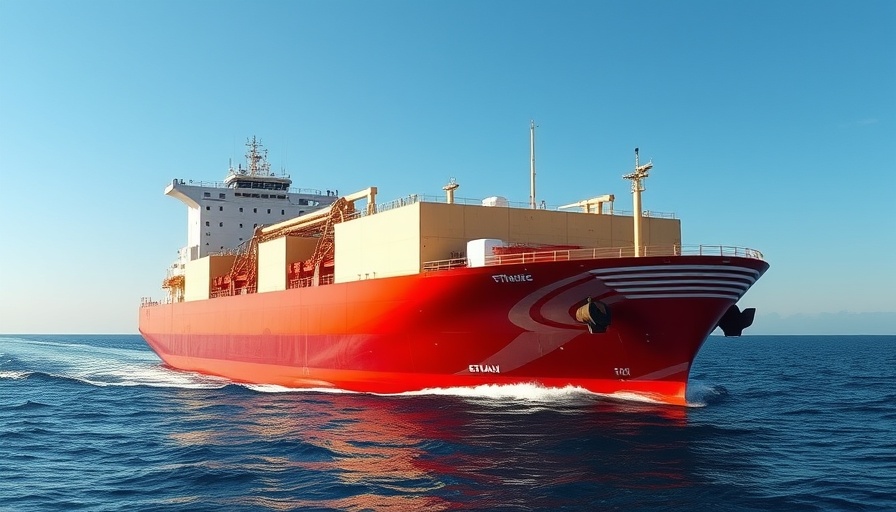
Innovation in Ethane Transportation: A New Era Begins
The maritime industry is gearing up for a transformational shift with the construction of five new Very Large Ethane Gas Carriers (VLECs) set to revolutionize U.S. ethane exports. These vessels will be built by Samsung Heavy Industries (SHI) and will feature advanced Wärtsilä Gas Solutions designed to optimize efficiency while minimizing environmental impact. The ships are being commissioned by Mitsui O.S.K Lines (MOL) and will transport ethane from the U.S. to Thailand, a move anticipated to strengthen trade ties and support global energy needs.
The Technology Behind the VLECs
Equipped with dual-fuel ethane propulsion engines, the new vessels promise a significant reduction in emissions, specifically greenhouse gases, sulfur oxides, and nitrogen oxides compared to traditional heavy fuel oil vessels. This innovative approach demonstrates a commitment to sustainable shipping practices, addressing both operational costs and environmental concerns in today’s climate-conscious market.
A Long History of Successful Partnerships
Wärtsilä Gas Solutions’ collaboration with both SHI and Mitsui O.S.K. is not new. The company has a history of successful projects with SHI, reinforcing the reliability of their cargo handling and fuel gas supply systems. With a comprehensive scope of supply that includes engineering, equipment, and crucial support during construction and commissioning, Wärtsilä is positioned to ensure these VLECs meet high standards of reliability and efficiency.
Implications for Global Trade and the Environment
This venture is not just about building new ships; it has broader implications for global trade. By facilitating U.S. ethane exports to Thailand, these vessels could play a vital role in meeting energy demands in Southeast Asia while simultaneously promoting the U.S. as a key player in the global energy market. Additionally, the advancements in LNG technology could inspire similar investments across other energy sectors, fostering innovation and sustainability.
Future Perspectives: What Lies Ahead?
As the shipping industry leans more towards environmentally friendly solutions, the deployment of these VLECs could herald a new era in maritime transport. Experts predict that if successful, this model could influence the design and operational strategies of future vessels, making sustainability a standard rather than an exception. The path forward is marked by opportunities for further advancements in technology and practices that will contribute to reducing the carbon footprint of the maritime industry.
Final Thoughts: The Need for Sustainability in Shipping
As maritime economies evolve, it's critical for companies and stakeholders to embrace sustainable practices. Wärtsilä’s role in this transition highlights the importance of innovative solutions that do not just serve immediate business goals but also consider long-term environmental impacts. The successful implementation of these VLECs could serve as a blueprint for future projects aiming for sustainability, urging industries worldwide to rethink how they approach energy transportation and consumption.
In closing, the construction of these VLECs is an exciting development for the maritime industry and a clear indicator that there’s a growing shift towards sustainability within the sector. Stakeholders in shipping, energy, and environmental conservation should keep a close watch on this project as it unfolds.
 Add Row
Add Row  Add
Add 




Write A Comment